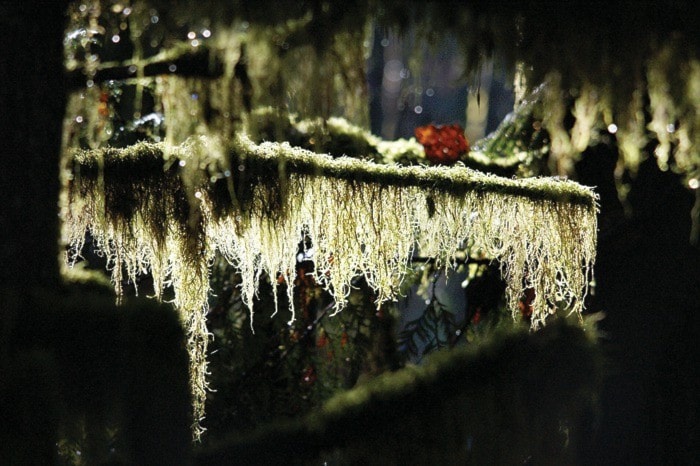During December’s damp and chill, Mother Earth has transformed our winter landscape with miniature jungles of dew-soaked moss.
Often overlooked and unappreciated, these small green plants glow in gloomy winter with cheerful green vigour, brightening even the darkest days.
Mosses are the most diverse and abundant understorey vegetation within our forests.
About 1,000 species of moss exist in Canada, with some 700 or so found in British Columbia alone.
Rootless (and fancy-free), with no true leaves or stems, mosses anchor to rocks and trees with filaments called rhizoids, which do not absorb nutrients in the manner of roots.
Water and mineral nutrients are absorbed by the plant’s thin leaves as rain water washes through.
This aristocratic green fuzz possesses many magical qualities, chief among them the ability to dry completely and then revive with moisture after long periods of dormancy (as long as 19 years).
They do not flower or produce seeds, but reproduce by spores – microscopic reproductive cells that easily float in a breeze.
The sporophyte (spore-bearing parts) are the long stalks tipped with capsules, towering high above the leaf-like structure.
The earliest true moss fossils date back 300 million years.
Referred to on occasion as “living fossils,” mosses have changed very little since that time.
Plan to spend a winter’s day out on a soul-soothing trip to the world of the wild mosses.
Look for these little green denizens in any cool, damp, shady area … perhaps even your own backyard.
Warm wishes to all Island Wild readers for a peaceful Christmas and festive fun out on nature trails.
E-mail wildernesswest@shaw.ca. “Nature Campbell River” and Backyard Bird
